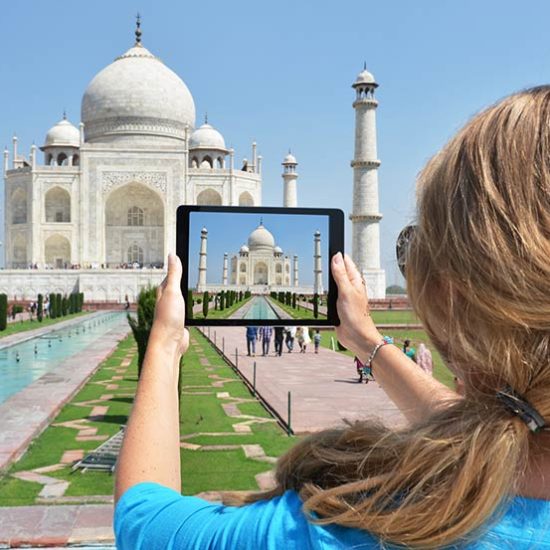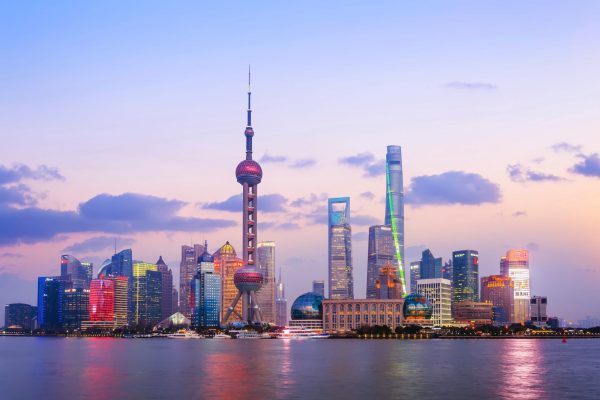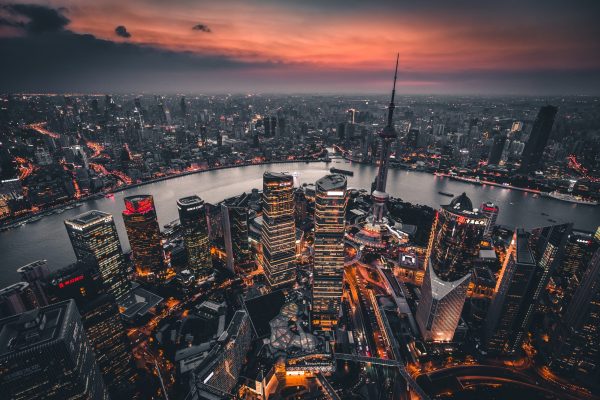Shanghai
Shanghai literally means the city by the sea. Shanghai is situated at 31° 14' north latitude and 121° 29'east longitude, on the west shore of the Pacific Ocean. It is bordered on the north and west by Jiangsu Province , on the south by Zhejiang Province, and on the east by the East China Sea . Right in the middle of China's east coastline, Shanghai is an excellent sea and river port, boasting easy access to the vast hinterland.
The city is divided into two parts by the Huangpu River: Puxi (west of the Huangpu River) and Pudong (east of the Huangpu River). Puxi is the older part of the city and hosts the majority of shops, restaurants and museums. Pudong is the modern part, and is recognized for its rather unusual yet extremely impressive high-rises such as Shanghai's tallest buildings, the Shanghai International Financial Center, Jinmao Building and the Oriental Pearl TV Tower.
Shanghai Population
Due to constant inflow of people from other parts of the country, the size of population in Shanghai keeps growing. Before Shanghai was liberated in 1949, it only had a population of 5.2 million. According to the Shanghai Statistics Bureau, Shanghai's population of residents with permanent residence registration had grown to 24.15 million, among which 14.33 million were long-term residents and 9.8 million were immigrants by the end of 2015.
History
As an historical and civilized country with a long history, the abundant number of traditional festivals is an integral part of the cultural landscape. Each festival has its own historical origin, legend and enjoyment. They reflect a nation’s traditional habits and religious morality. The main traditional festivals are the Spring Festival, Lantern Festival, Qingming Festival, Dragon Boat Festival, Chinese Valentine’s Day, Mid-Autumn Festival, Double Ninth, etc – all of which are spectacular celebrations.
Spring Festival
The Spring Festival is the most celebrated traditional Chinese festival and known as “Guo Nian” in Chinese. With the coming of Chinese New Year, every family will gather to have dinner, known as “Tuan Nian” which means “getting together”. People will stay up late even all night on Chinese New Year’s Eve, putting up the spring festival scrolls and decorating with lanterns and streamers. Meanwhile, local people will pay visits to each other at the beginning days of Chinese New Year, play the lion dance and the dragon lantern dance, put on Shehuo show, visit flower markets and appreciate lantern lights.
Lantern Festival
The 15th day of the 1st lunar month is the Chinese Lantern Festival. The 15th day is the first night to see a full moon. Therefore, the day is also called Yuan (Round) Xiao (Night) Festival in China. According to the Chinese tradition, at the very beginning of a new year, when there is a bright full moon hanging in the sky, there should be thousands of colorful lanterns hung out for people to appreciate. At this time, people will try to solve the puzzles on the lanterns and eat Yuanxiao (glutinous rice ball) and get all their families united in the joyful atmosphere.
Qingming Festival
The Qingming Festival meaning Clear and Bright Festival, is a traditional Chinese festival on the 104th day after the winter solstice (or the 15th day from the Spring Equinox), usually occurring around April 5 of the Gregorian calendar. Every leap year, Qing Ming is on April 4. Astronomically, it is also a solar term. In solar terms, the Qingming festival is on the 1st day of the 5th solar term, which is also named Qingming. Its name denotes a time for people to go outside and enjoy the greenery of springtime, and also to tend to the graves of departed ones.
Qingming is a statutory public holiday in mainland China in 2008 for the first time since 1949.
The holiday is also known by a number of other names in the English language:
• All Souls Day
• Clear Brightness Festival
• Festival for Tending Graves
• Grave Sweeping Day
• Chinese Memorial Day
• Tomb Sweeping Day
• Spring Remembrance
Tomb Sweeping Day and Clear Brightness Festival are the most common English translations of Qingming Festival.
For the Chinese, it is a day to remember and honor one’s ancestors at grave sites. Young and old pray before the ancestors, sweep the tombs and offer food, tea, wine, chopsticks, (joss) paper accessories, and/or libation to the ancestors. The rites are very important to most Chinese and especially farmers. Some people carry willow branches with them on Qingming, or put willow branches on their gates and/or front doors. They think that willow branches help ward off the evil ghosts that wander on Qingming. Also on Qingming, people go on family outings, start the spring plowing, sing, dance, and Qingming is a time where young couples start courting. Another popular thing to do is fly kites (in shapes of animals, or characters from Chinese opera).
Hanshi, the day before Qingming, was created by Chong’er, the Duke Wen of the state of Jin during the Spring and Autumn Period when he accidentally killed his personal friend and servant Jie Zhitui and his mother in a fireblaze in the hope of making him return to him (Chong’er). On Hanshi, people were not allowed to use fires to heat up food, thus nicknaming it the Cold Food Festival. Eventually, 300 years ago, the Hanshi “celebration” was combined with the Qingming festival, but later abandoned by most people.
Qingming itself was created by the Tang Emperor Xuanzong in 732. It is said that because the wealthy held too many expensive, elaborate ancestor-worshipping ceremonies, in a needed effort to lower this expense, Emperor Xuanzong declared that respects could be formally paid at ancestor’s graves only on Qingming.
Qingming in Chinese Tea Culture
The Qingming Festival holiday has a lot of significance in Chinese Tea culture since this specific day divides the fresh green teas by their picking dates. Green teas made from leaves picked before this date are given the prestigious ‘pre-qingming’ or ‘mingqian’ designation which commands a much higher price tag. These teas are prized for having much lighter and subtler aromas than those picked after the festival.
Qingming in literature
Qingming was frequently mentioned in Chinese literature. Among these, the most famous one is probably Du Mu’s poem (simply titled “Qingming”):
A drizzling rain falls like tears on the Mourning Day;
The mourner’s heart is breaking on his way.
Where can a winehouse be found to drown his sadness?
A cowherd points to Almond Flower (Xing Hua) Village in the distance.
Dragon Boat Festival
Falling on the May 5th of the lunar calendar, another traditional festival is held – the Dragon Boat Festival, also called the Double Fifth Festival. People celebrate the Dragon Boat Festival so as to mourn for the great poet, writer and noble officer, QU Yuan who is said to have committed suicide by drowning himself in a river. In order to prevent the fish and shrimp from biting QU Yuan, people put the ZongZi (dumpling made of glutinous rice wrapped in bamboo or reed leaves) they prepared into the river to feed them. The tradition of eating and making ZongZi was passed down generation by generation. It is a festival celebrated for more than 2,000 years. It is also referred to as Health Day, and an opportunity for people to sweep their yards, hang calamus and artemisia, drink rice wine and sprinkle it around the courtyard as a disinfectant.
Double Seventh Festival
Double Seventh Festival,known Qi Xi in Chinese (literally “The Night of Sevens”) and also known as Magpie Festival, falls on the seventh day of the seventh lunar month on the Chinese calendar. It is sometimes called Chinese Valentine’s Day in recent years.
Young girls traditionally demonstrate their domestic arts, especially melon carving, on this day and make wishes for a good husband. It is also known by the following names:
• The Festival to Plead for Skills
• The Seventh Sister’s Birthday
• The Night of Skills
The story of Cowherd and Weaver Girl
In late summer, the stars Altair and Vega are high in the night sky, and the Chinese tell the following love story, of which there are many variations:
A young cowherd named Niulang (literally “the cowherd”, the star Altair) happens across seven fairy sisters bathing in a lake. Encouraged by his mischievous companion the ox, he steals their clothes and waits to see what will happen. The fairy sisters elect the youngest and most beautiful sister Zhinu (literally “the weaver girl”, the star Vega) to retrieve their clothing. She does so, but since Niulang has seen her naked, she must agree to his request for marriage. She proves to be a wonderful wife, and Niulang a good husband. They lived happily and had two children. But the Goddess of Heaven (in some versions Zhinu’s mother) finds out that a mere mortal has married one of the fairy girls and is furious and orders her return to Heaven. (In another version, the Goddess forced the weaver fairy back to her former duty of weaving colorful clouds in the sky because she could not do her job while married to the mortal.) Down on Earth, Niulang is very upset learning that his wife is gone. Suddenly, his cow begins to talk telling him that if he kills him and puts on his hide, he will be able to go up to Heaven to find his wife. With tears flowing, he killed the cow, put on the skin and carrying his two children with him and off he went to Heaven to find Zhinu. The Goddess found out he had come and was very angry. Taking out her hairpin, the Goddess scratches a wide river in the sky to separate the two lovers forever (thus forming the Milky Way, which separates Altair and Vega).
Zhinu must sit forever on one side of the river, sadly weaving on her loom, while Niulang watches her from afar and takes care of their two children.
But once a year all the magpies in the world take pity on them and fly up into heaven to form a bridge of magpies over the star Deneb in the Cygnus constellation so the lovers may be together for a single night, the seventh night of the seventh moon.
It is said that if it rains on the night of Qi Xi, they are the tears of Niulang and Zhinu crying at the misery of their life.
Traditions
On Qi Xi, a festoon is placed in the yard and the single or newly married women in the household make an offering to Niulang and Zhinu consisting of fruit, flowers, tea, and facial powder (makeup). After finishing the offering, half of the facial powder is thrown on the roof and the other half divided among the young women. It is believed by doing this the women are bound in beauty with Zhinu.
Another tradition is for young girls to throw a sewing needle into a bowl full of water on the night of Qi Xi as a test of embroidery skills. If the needle floats on top of the water instead of sinking, it is believed to be an indication of the girl’s being a skilled embroideress.
Mid-Autumn Festival
The 15th day of the eighth month of the lunar calendar is China’s Mid-Autumn Festival. It is so named because it falls in the middle of autumn. The moon is roundest and brightest at this time people across all of China will sit down and eat with their closest family and friends, miss their hometowns, and get deluged by memories. Because of the tendency to sit around a round table with family and friends, Mid Autumn Festival is also called “Gathering Holiday”. And there is no denying that Mid Autumn Festival is one of the most important traditional Chinese holidays. In some local places in China, people still play the straw dragon dance and other such activities at the festival.
Double Ninth Festival
Double Ninth Festival falls on the 9th day of the 9th lunar month of the Chinese calendar. In the ancient Book of Changes, people take the number six as Yin and the number nine as Yang. On that day, it’s the 9 th day of the 9 th month of a year, so it is known as Double Yang or Double Ninth. “Nine” and “long live” have the same pronunciation in Chinese and the number “nine” is the largest in the single digit numbers, so nine holds a significance for Chinese. In 1989 the Chinese Government proclaimed the day Senior Citizen’s Day, so now the day is also an opportunity to care for and appreciate the elderly. To celebrate the day, there are many activities which include visiting family and friends, climbing mountains, wearing zhuyu (a kind of plant and considered to have cleansing qualities ), eating Double Ninth cake, drinking chrysanthemum wine and so on.
Dining
Shanghai cuisine
Shanghai cuisine (Chinese: 上海菜; pinyin: Shànghǎi cài), also known as Hu cuisine (simplified Chinese: 沪菜; traditional Chinese: 滬菜; pinyin: Hù cài), is a popular style of Chinese food. In a narrow sense, Shanghai cuisine refers only to what is traditionally called Benbang cuisine (本帮菜; 本幫菜; Běnbāng cài; ‘local cuisine’) which originated in Shanghai; in a broad sense, it refers to complex and developed styles of cooking under profound influence of those of the surrounding provinces, Jiangsu and Zhejiang. It takes “colour, aroma and taste” as its elements, like other Chinese regional cuisines, and emphasises in particular the use of seasonings, the quality of raw ingredients and original flavours. Shanghai was formerly a part of Jiangsu province and as such is most similar to Jiangsu cuisine.
Spicy
To generalize, the food of central and southwestern China is spicier than the rest of the country. That includes the provinces of Hunan, Sichuan, and Guizhou, and the city of Chongqing. The spice from Hunan is hot but not “numbing” (no Sichuan peppercorn), the spice from Sichuan is more numbing than spicy, and people from Chongqing like a mixture of the two. Guizhou is often quite spicy but with a sour accent, but it’s kind of a moot point: there are few to no Guizhou restaurants in Shanghai.
Not Spicy
This can be a whole host of cuisines, many of which bear little resemblance to each other: the light touch of Cantonese food with its vegetables and seafood; the sweet, boozy cooking of Shanghai; the salty seafood of Ningbo; hearty dumplings and meat from northeastern China, known as Dongbei; pulled noodles and lamb from Henan and Lanzhou; the river food of Hubei; Beijing’s roast duck and opulent imperial cuisine; the tropical, herbal flavors of Yunnan; and the lamb and breads of Xinjiang.
Soup Dumplings & Pan-Fried Dumplings
Shanghai has an international reputation for its xiao long bao, little soup dumplings, and a national reputation for its shengjian bao, a pan-fried cousin of the soup dumpling with a thicker skin.
Good to Know
City
Shanghai
Visa Requirements
Tourist visa: Required
Languages spoken
Mandarin & Shanghainese
Currency used
Renminbi (RMB)
Electricity and Voltage
220 volts, 50 cycles
Climate
With a pleasant northern subtropical maritime monsoon climate, Shanghai enjoys four distinct seasons, generous sunshine and abundant rainfall. Its spring and autumn are relatively short compared with summer and winter. The average annual temperature is 18 degrees Celsius. The city has a frost-free period lasting up to 230 days a year. The average annual rainfall is 1,200 millimetres (about 50 inches). However, nearly 60% of the precipitation comes during the May-September flood season, which is divided into three rainy periods, the Spring Rains, the Plum Rains and the Autumn Rains.
The highest temperature is in July and August. In these two months, the temperature can reach 28 degrees centigrade. The coldest period is from the end of January to early February – usually during the Chinese Spring Festival. This awfully cold period will last for about three days but it seldom snows. From March to May, the conditions are pleasant so this is the best season for traveling. The ‘Plum Rain Season’ is from mid-June to early July. From late August to the first twenty days of September, the city is also susceptible to typhoons, none of which in recent years has caused considerable damage. Generally you will need a light coat and sweater in spring and short- sleeved shirts in summer. In autumn, long-sleeved shirts, sweater and coat are necessary, while sweater and overcoat are appropriate in winter.
International Cruise Terminals
Shanghai Port International Cruise Terminal
With three large berths, Shanghai Port International Cruise Terminal is the world’s first cruise terminal to pass LRQA ISO 9001 Certification. It operates international regular passenger-cargo liners, visiting port cruise liners and home port cruise liners. The home port cruise lines mainly run from Shanghai to Japan and South Korea.
By constantly expanding its extended cruise business, Shanghai Port International Cruise Terminal has developed from a cruise terminal into a diversified terminal integrating such business types as duty-free commodity sales, cruise travel, catering, imported commodity supermarket, cross-border e-commerce, site leasing, bonded warehousing, ship supply, ship agency and imported commodity trade.
Address: 500 East Broadway Road, Hongkou District, Shanghai
Tel: +86 21 61819900
Fax: +86 21 61818024
E-mail: marketing@cruiseterminal.net
Website: www.cruiseshanghai.com
Wusongkou International Cruise Terminal
Located in the waters of Paotai Bay in Wusong Estuary, Shanghai, at the confluence of the Yangtze River, Huangpu River and Wenzaobang, Wusongkou International Cruise Terminal is one of the busiest international home cruise ports in the Asia-Pacific region. The terminal area has a planned coastline of 1,500 m. With a coastline of 774 m, Phase I includes two large cruise berths for 100,000-ton cruise liners and 200,000-ton cruise liners respectively.
In the follow-up project, the terminal will be extended upstream by 380 m on the basis of Phase I and two large cruise berths will be built. After the construction of the berths, the total length of the terminal will reach 1,600 m to accommodate two 225,000-ton and two 150,000-ton cruise berths, at which time the port will take on the spectacular scene of ‘four-ship berthing’.
Address: 1 Baoyang Road, Baoshan District, Shanghai
Tel: +86 21 66593501
Fax: +86 21 66593501
E-mail: wskict@126.com
Website: www.wskict.com
Before you enter Shanghai, China, please don’t forget:
- You must get a visa before going to China.
- Your passport with a validity of 6 months at least.
- Cash. It’s better for you to have some cash at hand. You can change RMB at exchange points in the airport.
- Anti-diarrhea tablets, antibiotics and any specialty medicines from home are useful. You should also take along some basic medicines, such as painkillers.
- Daily necessities. It’s easy to buy things in China but when you first arrive, it may prove difficult. Bring shampoo, toothpaste, toothbrush for your first week and then you should be able to buy them at various local stores. They have imported products suitable for expats, such as hair dye and cosmetics.
- Clothes. It’s not easy for tall or bigger boned Westerners to buy clothes in China, as the Chinese are typically far smaller.
- Electricity adaptor. The most common plug types are the dual and three-pointed prongs, which are different from the West. China runs on 220 volts, which will burn 110-volt appliances.
- A good travel guide is necessary.
Not necessary, but very handy:
- Photocopies of important documents.
- Several passport photos.
- Your hotel’s contact details in Chinese so you don’t get lost.






